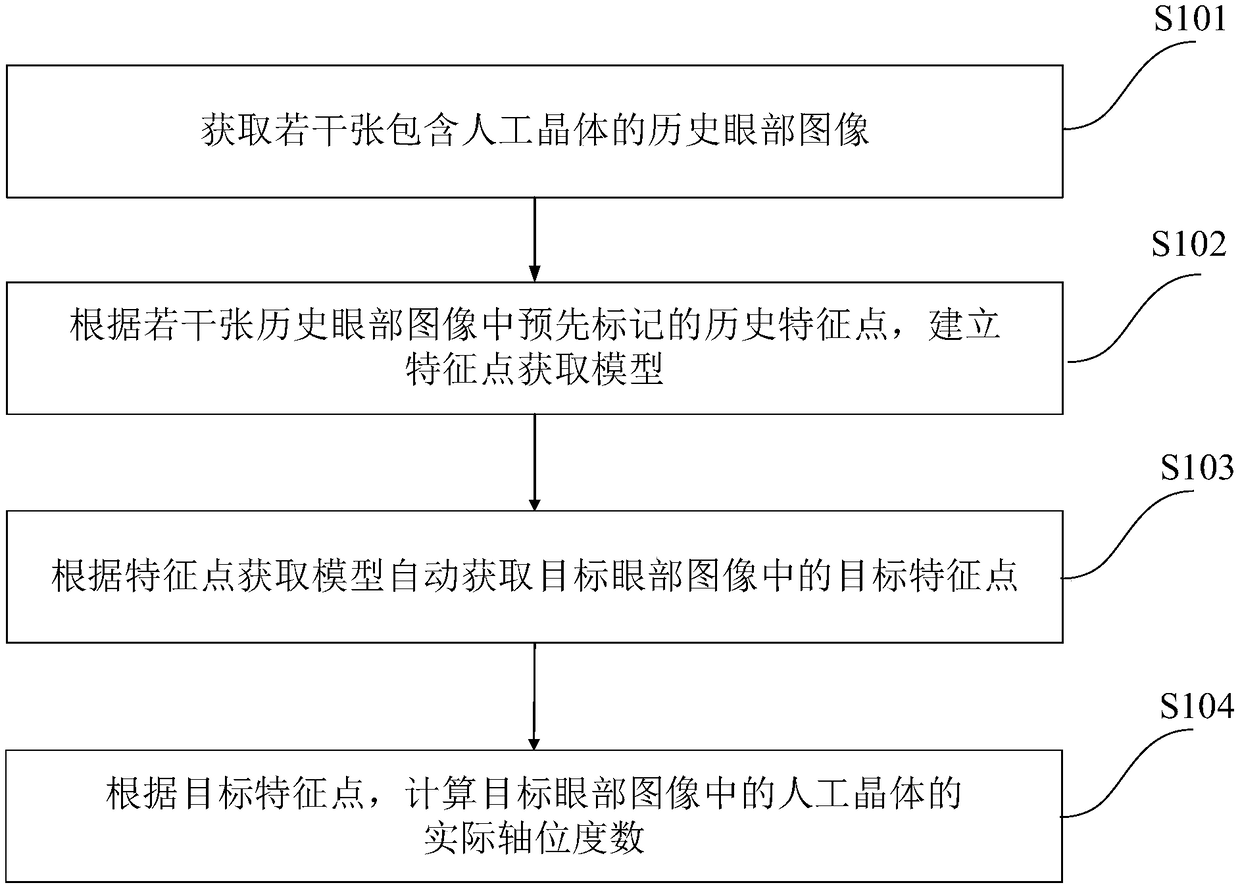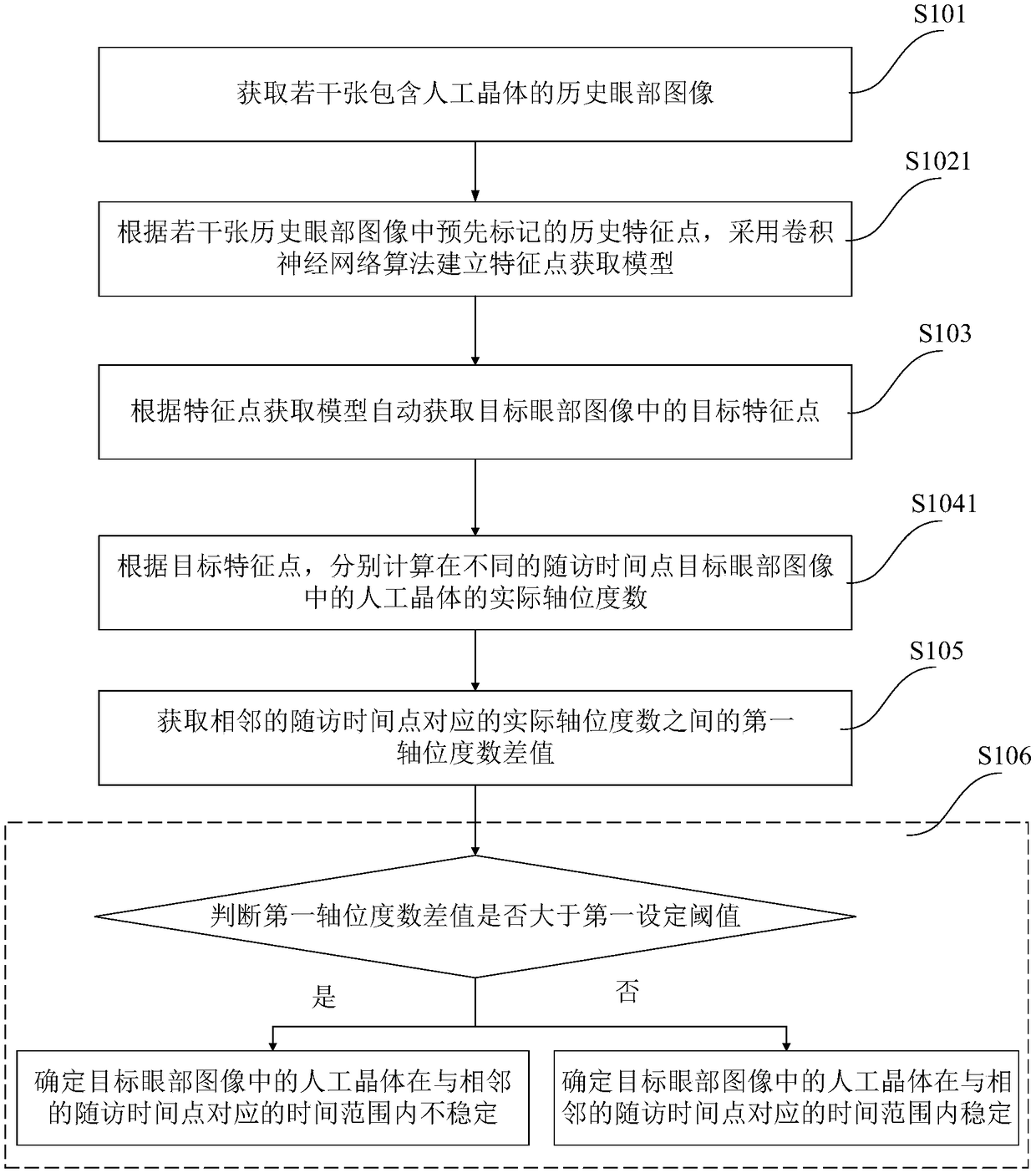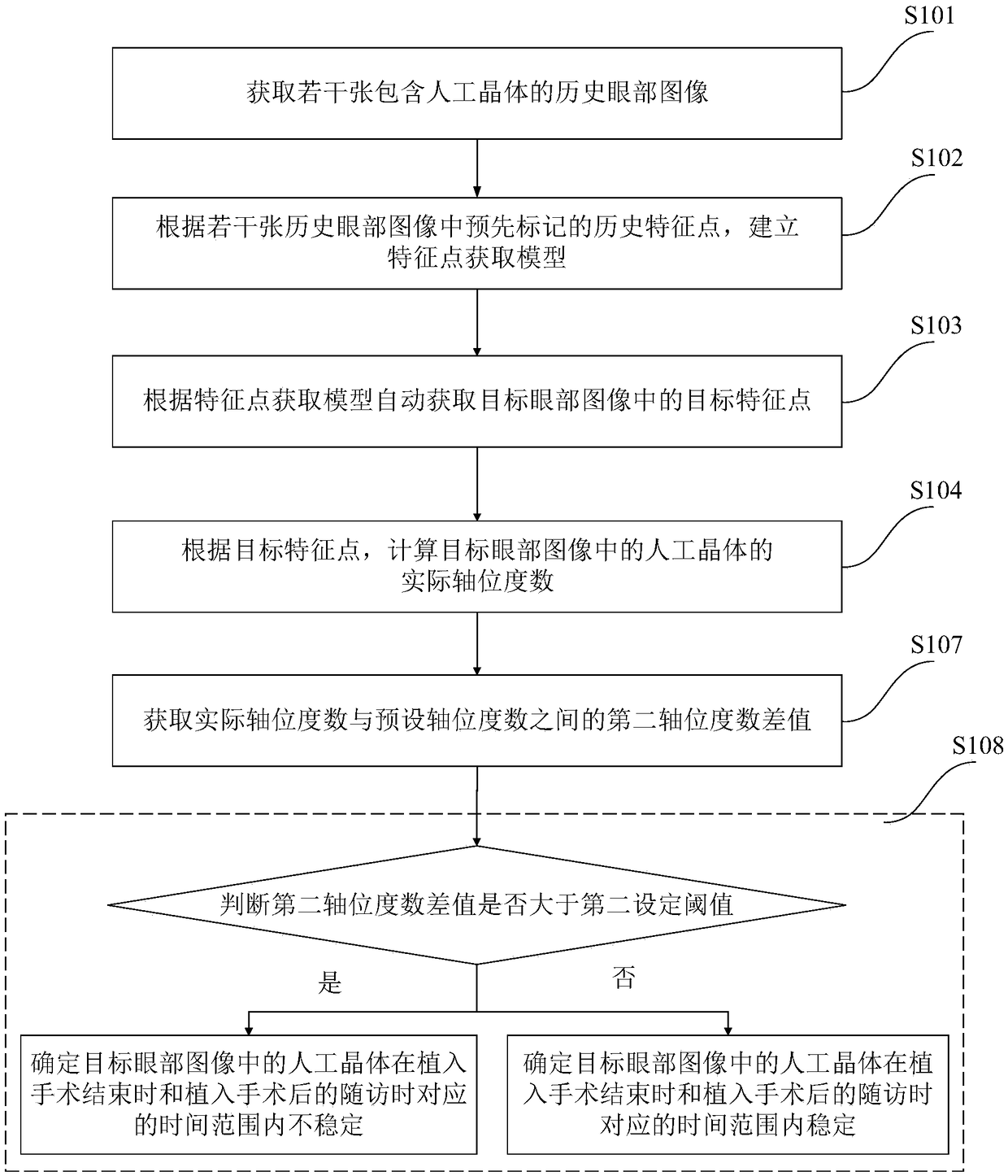Detection method and a system for an intraocular lens
An intraocular lens and detection method technology, applied in the field of image processing, can solve the problems of inability to target eye images corresponding to the same coordinate system, detection inconsistency, poor accuracy, etc., to achieve the effect of improving satisfaction, improving accuracy, and improving vision
- Summary
- Abstract
- Description
- Claims
- Application Information
AI Technical Summary
Problems solved by technology
Method used
Image
Examples
Embodiment 1
[0068] Such as figure 1 As shown, the detection method of the intraocular lens of the present embodiment comprises:
[0069] S101. Obtain several historical eye images containing intraocular lenses;
[0070] Wherein, the intraocular lens is an astigmatic intraocular lens, and specifically, the historical eye image is an image taken through an anterior segment slit lamp after implantation of an astigmatic intraocular lens.
[0071] S102. Establish a feature point acquisition model according to the pre-marked historical feature points in several historical eye images;
[0072] Wherein, the historical feature points include the reference points on the corneoscleral limbal blood vessels, the center point of the intraocular lens and the axial marker points in the historical eye images;
[0073] S103. Automatically acquire target feature points in the target eye image according to the feature point acquisition model;
[0074] Wherein, the target feature point includes the referen...
Embodiment 2
[0081] Such as figure 2 As shown, the detection method of the intraocular lens of this embodiment is a further improvement to Embodiment 1, specifically:
[0082] Step S102 specifically includes:
[0083] S1021. According to the pre-marked historical feature points in several historical eye images, use a convolutional neural network algorithm to establish a feature point acquisition model.
[0084] Specifically, the pre-marked historical feature points in the historical eye images are obtained by manual marking. For example, a convolutional neural network algorithm is used to perform machine learning on historical feature points in 10,000 historical eye images that have been manually marked, and a feature point acquisition model is established; Thousands of eye images are verified, and eye images with certain differences in verification results are manually re-labeled and machine-learned again, and then through iterative upgrades and parameter optimization, the specificity ...
Embodiment 3
[0099] Such as image 3 As shown, the detection method of the intraocular lens of this embodiment is a further improvement to Embodiment 1, specifically:
[0100] After step S104, it also includes:
[0101] S107. Obtain the second axial degree difference between the actual axial degree and the preset axial degree;
[0102] Among them, the preset axial degree is the axial degree of the intraocular lens in the target eye image at the end of the intraocular lens implantation operation, and the actual axial degree is the intraocular lens in the target eye image during the follow-up after the intraocular lens implantation operation the axial degree;
[0103] S108. Determine whether the second axial diopter difference is greater than the second set threshold, and if so, determine that the intraocular lens in the target eye image is not within the time range corresponding to the end of the implantation operation and the follow-up after the implantation operation. Stable; otherwise...
PUM
 Login to View More
Login to View More Abstract
Description
Claims
Application Information
 Login to View More
Login to View More - R&D
- Intellectual Property
- Life Sciences
- Materials
- Tech Scout
- Unparalleled Data Quality
- Higher Quality Content
- 60% Fewer Hallucinations
Browse by: Latest US Patents, China's latest patents, Technical Efficacy Thesaurus, Application Domain, Technology Topic, Popular Technical Reports.
© 2025 PatSnap. All rights reserved.Legal|Privacy policy|Modern Slavery Act Transparency Statement|Sitemap|About US| Contact US: help@patsnap.com



